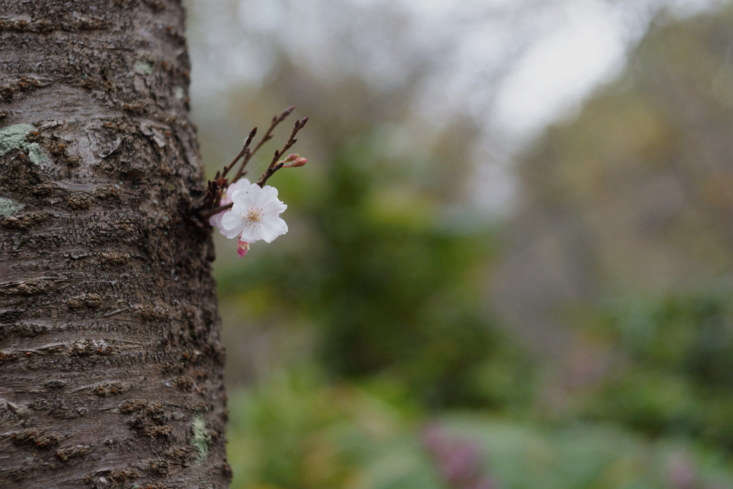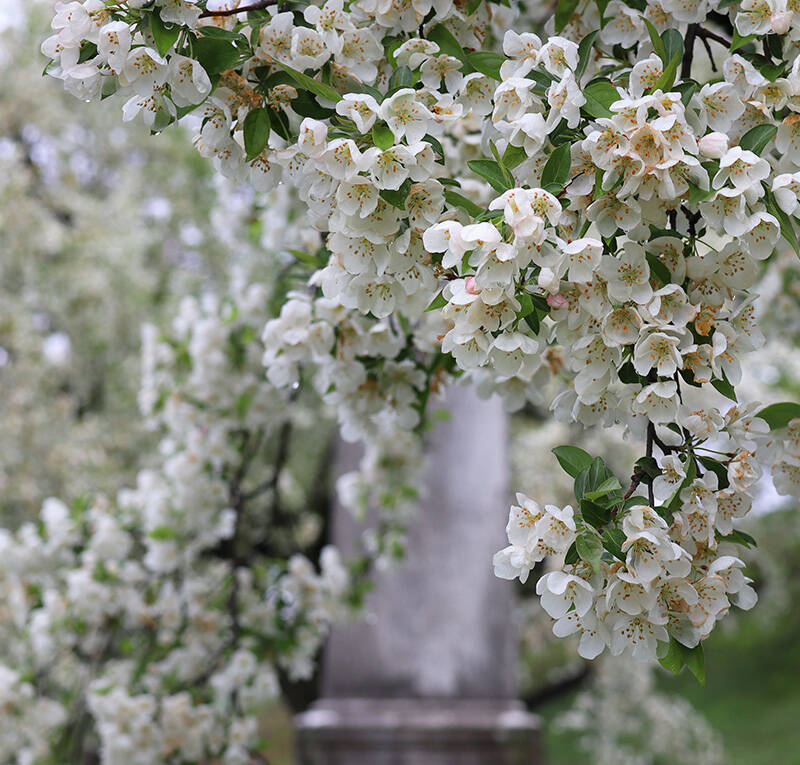Botanical gardens exist to teach people about plants—how to identify, display, and use them for medicinal purposes—and historians and horticulturalists rely on their collections for research material. The rest of us? We get the benefit of the beauty of botanical gardens. A stroll through some of our favorites around the world also offers inspiration to use at home.
Visit vicariously with us; here are 10 ideas to steal from botanical gardens around the world.
Tokyo, Japan

A little imperfection can be perfect. It’s common practice to prune unwanted tree growths—known as water sprouts if they appear on a trunk and suckers if they come from the roots—to direct its energy toward growing in the right directions. But sometimes? You go, water sprout.
In Tokyo, the sprawling Jindai Botanical Gardens occupies the former site of a medieval fortress and has more than 100,000 trees and shrubs you can examine for serendipitously blooming water sprouts and suckers; for hours and admission prices, see Jindai Botanical Gardens.
Pisa, Italy

Accentuate curves. At the botanical gardens in Pisa (the oldest in Europe), a shady seat is artfully placed at the edge of a winding stream to encourage contemplation. Study the contours of your own land and choose the best destination for a bench beneath a tree or pergola.
Established in the 16th century, the botanical gardens at the Università di Pisa are open to the public most days of the year; for hours and admission, see Orto e Museo Botanico. (Fair warning: “Four days a year, between the months of May and September, the Botanical Garden will close to the public for the application of the necessary treatments against the red awl.”)
Karuizawa, Japan

Blend in. Furnishings can invite garden visitors into the landscape—to sit, eat, nap, or read —without disrupting the serenity of the surroundings.
A two-and-a-half hour train ride from Tokyo, the Karuizawa Town Botanical Garden has “about 1,600 trees and flowers gathered on the site of about 20,000 square meters to color the four seasons” and is open to the public from April 1 through Christmas. For hours and admission prices, see Karuizawa.
Brooklyn, New York

Plant a canopy of color. A small, spring-flowering tree—such as a cherry, dogwood, crabapple, magnolia, or plum tree—will burst into bloom before it leafs out, adding a bright burst of color to your early spring garden.
The Brooklyn Botanic Garden is known for its spectacular collection of blooming cherries, which burst into flower in early spring. For updates and hours, see Cherry Blossoms at BBG.
- 10 Ways to Improve Your Garden with a Pergola
- Cherry Blossoms: 7 Trees to See at Brooklyn Botanic Garden’s Festival
Barcelona, Spain

Never underestimate the power of a monochromatic palette. A swatch of flowers in a single color ripples and hypnotizes.
Set on the Montjuïc hill overlooking the city, the Jardí Botànic de Barcelona features plants from six regions with Mediterranean climates. For hours and admission prices, see Jardí Botànic.
Dublin, Ireland

Plant en masse. There is no such thing as too many spring-flowering bulbs—and nearly any combination of narcissi, bluebells, and crocuses looks magical in a meadow or lawn.
The National Botanic Gardens of Ireland was founded in 1795 “to promote a scientific approach to the study of agriculture,” according to the website. “In its early years the gardens demonstrated plants that were useful for animal and human food and medicine and for dyeing, but it also grew plants that promoted an understanding of systematic botany or were simply beautiful or interesting in themselves.” Open to the public and easily reached from the nearby city center of Dublin, the gardens boast a library, herbarium, and palm house. For hours and visitor information, see National Botanic Gardens.
Bangalore, India

Twin trees create a visual focal point. Not every garden has room to create a mirror-image montage but when it works, the effect is high drama.
The Lalbagh Botanical Garden in Bangalore, created in 1760, today displays “nearly 673 genera and 1,854 species of plant,” according to its website, and has a glass conservatory built in 1889 in the style of London’s Crystal Palace, which today hosts biannual flower shows. “In the necklace of Bangalore’s gardens, Lalbagh is a pendant and in the center of this pendant is the glass house in the form of a diamond,” notes the garden’s website. For hours and visiting information, see Lalbagh Botanical Garden.
Pasadena, California

Collect plants as specimens, the way railroad baron Henry Huntington did. He grew anything that struck his fancy, collecting melon seeds from restaurants in France and avocado seed from his men’s club in Los Angeles. His 120-acre botanical gardens (with 15,000 plant varieties) are open to the public. For more information, see The Huntington.
London, England

Grasses can add as much color as flowers, especially when planted in great drifts as at the Royal Botanical Gardens in London.
With more than 40,000 species of plants on 326 acres, Kew Gardens in southwest London features a palm house, a water-lily house, a bonsai house, an orangery…you get the idea. Plan to spend a whole day there. For hours and information, see Kew.
Rio de Janeiro, Brazil

Don’t be afraid of old-fashioned favorites. Scraggly roses need no improvement, whether they’re blooming in your garden or at Jardim Botânico in Rio de Janeiro.
With an orchid house, imperial palms, and a world-class collection of Amazonian water lilies, Jardim Botânico has since its opening in 1808 been a research center (in early years, the cultivation of Camellia sinensis for black tea was of paramount concern). For hours and visitors’ information, visit Jardim Botânico.
For more inspiration, see our Garden Ideas to Steal archives and our curated design guides for Hardscape 101 projects, including Fences & Gates, Retaining Walls, Edible Gardens, and Decks & Patios. And don’t miss:
- 10 Best Garden Design Trends for 2018
- A Leisurely Stroll Through the SF Botanical Garden in Golden Gate Park
- 10 Things Your Landscape Architect Wishes You Knew (But Is Too Polite to Tell You)
- April in New York: Visit the NY Botanical Garden in Bloom
- Insider’s Tour: Secrets of the Brooklyn Botanic Garden












Have a Question or Comment About This Post?
Join the conversation (0)